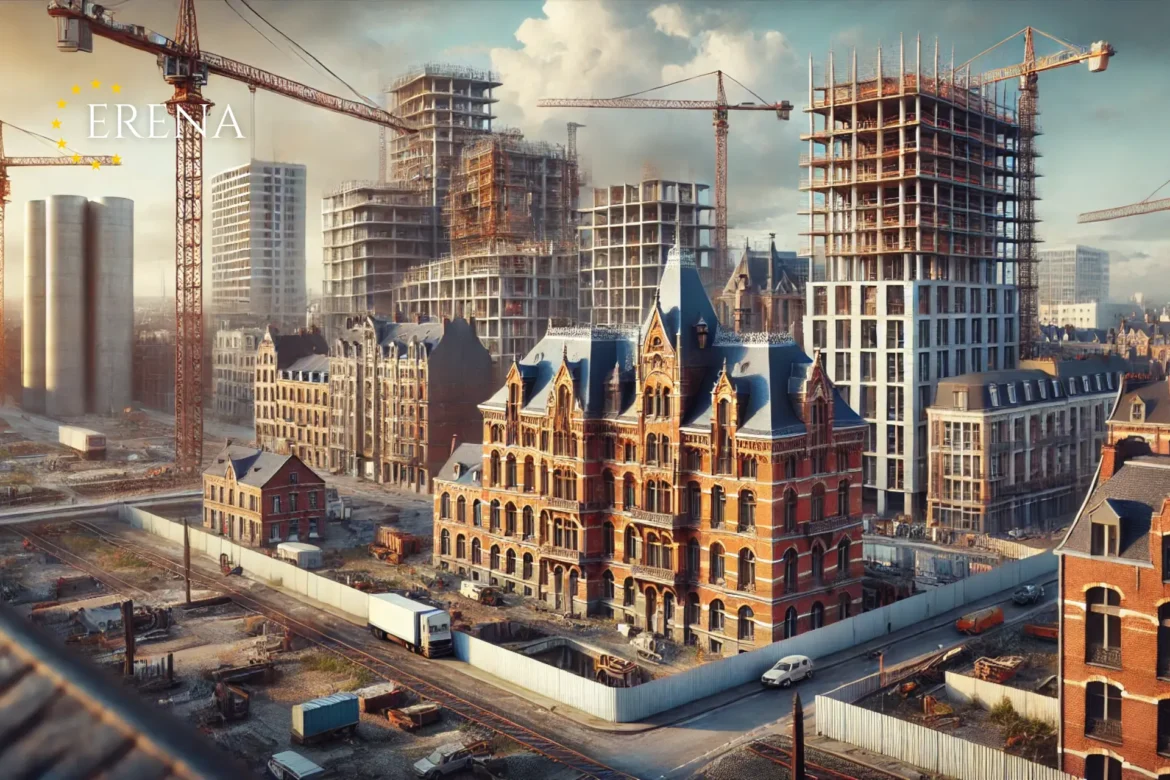Roubaix, a historic textile hub in northern France, boasts a rich architectural heritage. However, modern development projects now pose a serious threat to many of its historical structures. In particular, the working-class courées—narrow 19th-century housing units—are at risk of demolition, sparking concerns among preservationists and local communities.
The Courées: A Legacy of Roubaix’s Industrial Past
One of Roubaix’s most distinctive architectural features is the courées, rows of small houses built for textile workers during the Industrial Revolution. These homes, characterized by their compact structure and shared courtyards, represent an important chapter in the city’s social and economic history.
Unfortunately, many courées have fallen into disrepair over time, and developers see them as prime targets for demolition in favor of new constructions. In 2024, the European heritage organization Europa Nostra included the working-class housing of Roubaix-Tourcoing on its list of Europe’s 7 Most Endangered heritage sites. This designation highlights the urgent need for preservation efforts.
Economic Pressures and Rising Property Prices
Urban renewal projects in Roubaix are largely driven by economic factors. The city has struggled economically since the decline of its textile industry, leading to revitalization efforts that often prioritize new developments over historic preservation.
Property values in areas with courées remain relatively low, making them attractive to developers seeking to maximize profits. However, the loss of these historic buildings diminishes the city’s unique identity and risks erasing a vital part of its history.
Preservation Efforts and Community Involvement
Local organizations and residents are actively advocating for the protection and restoration of the courées. European heritage experts have urged local authorities to halt demolition plans and instead conduct feasibility studies for preservation.
Community-driven projects and sustainable development initiatives could play a key role in rehabilitating these structures while maintaining their historical integrity.
Balancing Development with Heritage Conservation
The challenges in Roubaix reflect a larger issue: how to balance urban development with heritage conservation. Sustainable urban planning must integrate historical preservation into modernization efforts.
Possible solutions include:
✅ Restoring courées as affordable housing or cultural spaces
✅ Incorporating heritage conservation into city planning regulations
✅ Encouraging public-private partnerships for restoration projects
Conclusion: The Future of Roubaix’s Heritage
Roubaix stands at a crossroads. While economic renewal is essential, it should not come at the cost of erasing the city’s architectural heritage. A collaborative approach—involving policymakers, preservationists, and residents—is necessary to ensure that Roubaix’s rich history remains an integral part of its future.

